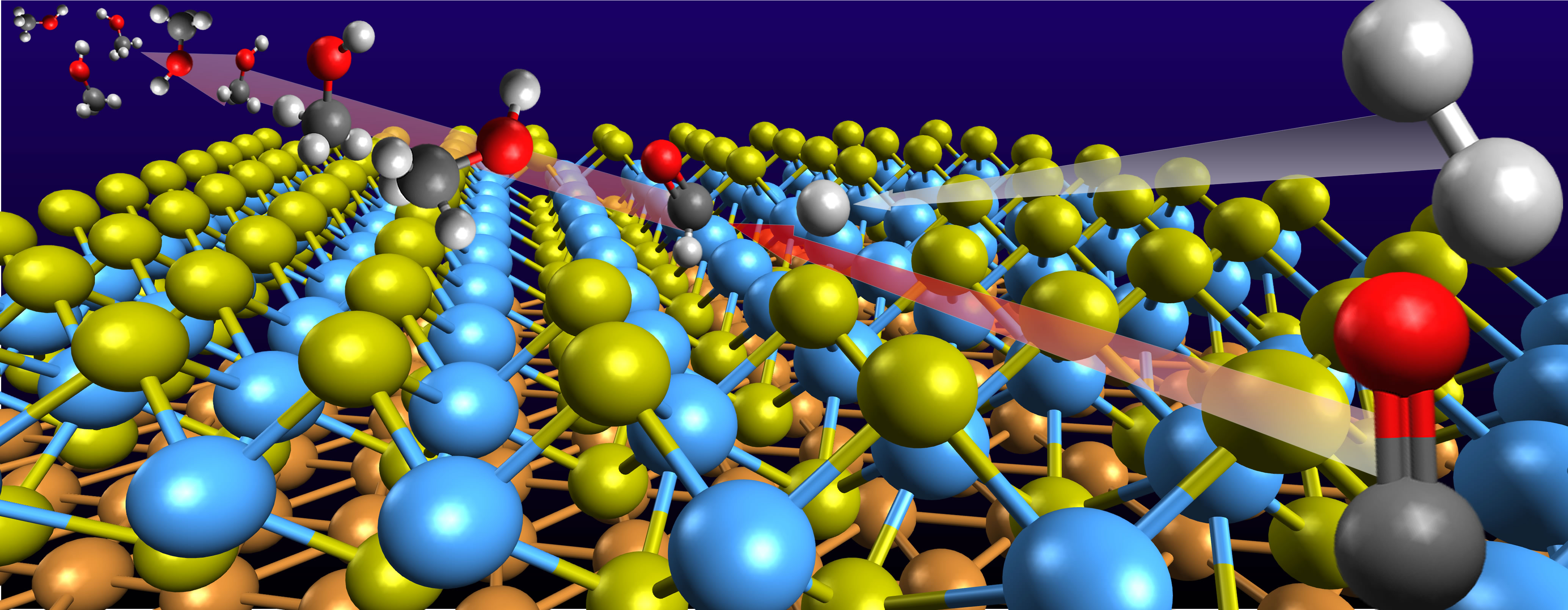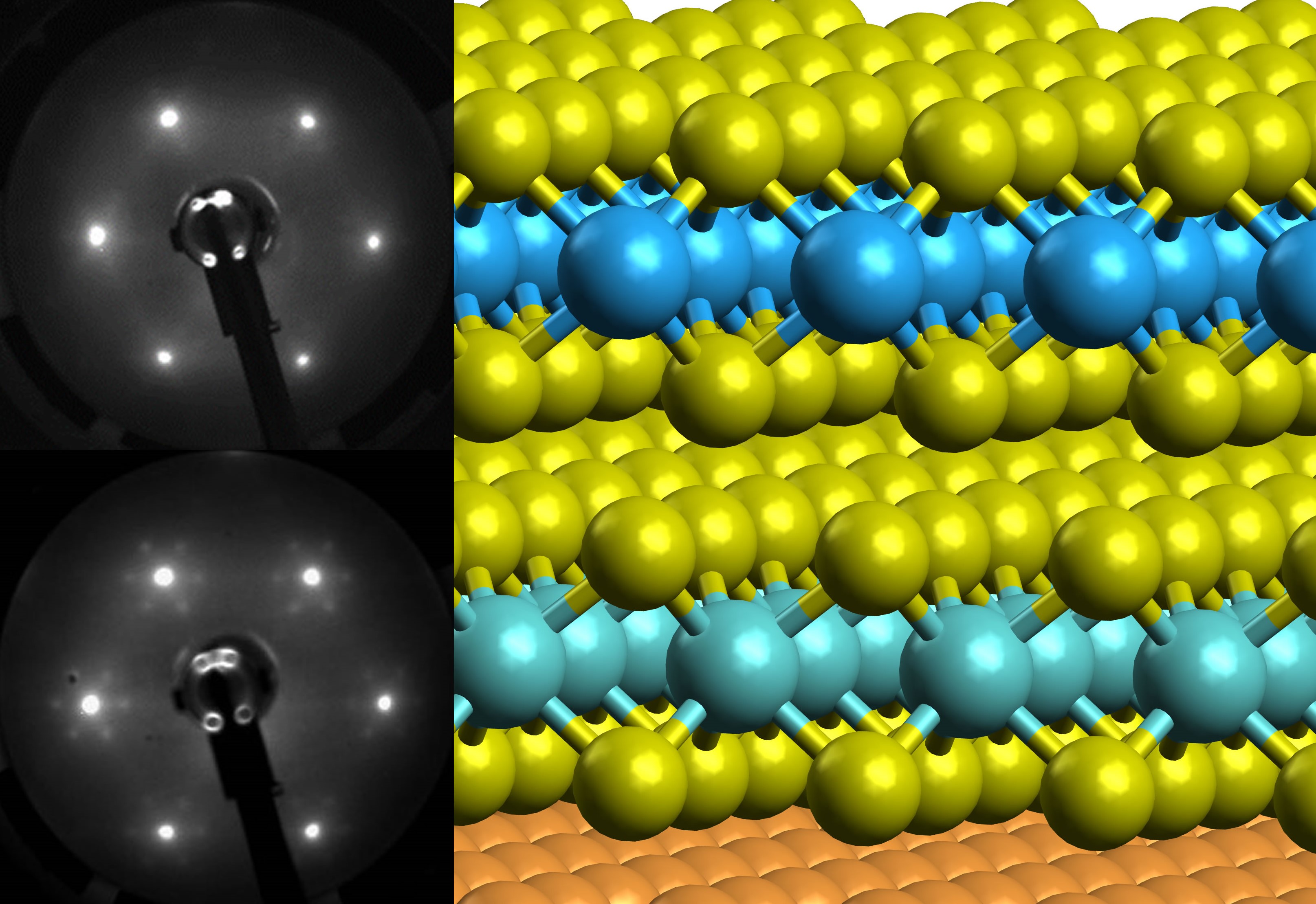[metaslider id=173]
Research projects
1. Synthesis of 2D nanostructured catalytic, photocatalytic, and photovoltaic materials
 LEED images and schematic representation of a 2D-MoS2 film (bottom) and a heterostructure formed by a 2D-WS2 layer grown on a 2D-MoS2 (top)
LEED images and schematic representation of a 2D-MoS2 film (bottom) and a heterostructure formed by a 2D-WS2 layer grown on a 2D-MoS2 (top)
Using molecular beam epitaxy and physical vapor deposition, we synthesize large area (1 cm2) crystalline 2D semiconductor materials, 2D-2D, and 2D-3D heterostrucures with the highest achievable purity. These materials can be subsequently decorated with metal and metal oxide nanoparticles and employed in catalytic, photocatalytic, and photovoltaic applications. The surface structure, composition, and electronic structure of these materials are investigated via low energy electron diffraction, Auger electron spectroscopy, and static soft x-ray photoelectron spectroscopy. Our group routinely synthesize large area 2D materials such as MoS2, WS2, TaS2, and ReS2 on various substrates.
2. Ultrafast charge carrier dynamics on 2D photocatalytic materials

This project focusses on understanding the ultrafast photoinduced charge carrier dynamics on 2D nanostructured photocatalytic materials consisting of 2D semiconductors decorated with metal and metal oxide nanoparticles. Pump-probe photoemission spectroscopy in conjunction with femtosecond extreme ultraviolet laser pulses is employed because of its capability to investigate the charge carrier surface dynamics with time resolution, surface sensitivity, and element specificity. Specifically, the ultrafast charge transfer from the 2D material to the particles, the charge trapping at the particle as well as the charge recombination are monitored with femtosecond resolution. The goal of the project is to understand the charge carrier dynamics at the surface of photocatalytic materials as well as to increase theirs photocatalytic efficiency by tuning the 2D material through the formation of bilayer stacks (homo- and hetero-structures) or the size and composition of the nanoparticles.
3. Tracking the ultrafast molecular dynamics during surface photocatalytic reactions

This project explores the ultrafast molecular dynamics involved in the formation of fuel molecules from renewable sources such as the photocatalytic reduction of CO2 in the presence of water. For these investigations we employ a technique that relies on a combination of time-of-flight mass spectrometry, pump-probe spectroscopy with ionization-detection at the surface, which allows for the direct time-, mass-, and energy-resolved detection of transient intermediates and product formation dynamics in a surface chemical reaction. The project aims to produce significant progress in understanding the mechanism of photocatalytic reactions by providing crucial information via direct detection of exotic intermediate species that cannot be perceived using the experimental approaches available so far.
4. Catalytic reactions on 2D nanostructured materials

 LEED images and schematic representation of a 2D-MoS2 film (bottom) and a heterostructure formed by a 2D-WS2 layer grown on a 2D-MoS2 (top)
LEED images and schematic representation of a 2D-MoS2 film (bottom) and a heterostructure formed by a 2D-WS2 layer grown on a 2D-MoS2 (top)